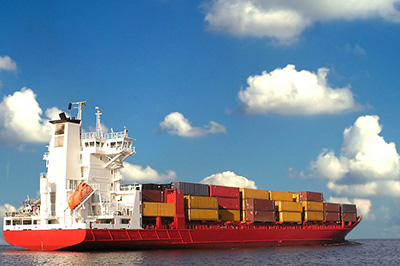U.S-bound waterborne shipments remain steady in May, reports Panjiva
May shipments at 987,650 were up 3.3% annually, which was down from April’s 9.7% annual spread, which was the fastest rate of growth going back to February 2016.
Trade volumes for United States-bound waterborne shipments remained steady in May, according to data recently issued by global trade intelligence firm Panjiva.
May shipments at 987,650 were up 3.3% annually, which was down from April’s 9.7% annual spread, which was the fastest rate of growth going back to February 2016, and on the heels of a 8.7% annual gain in March. Panjiva noted that May shipments were up 3.9% compared to April, and on a year-to-date basis shipments are up 3.6% at 4,571,561.
On basis of prior years' run rates, Panjiva said 39.7% of full-year shipments are completed by the end of May, which it said suggests full-year 2017 shipments could reach 11.51 million, or 3.3% higher than a year earlier and lines up with last month’s forecast.
Panjiva cited various factors for April’s strong performance, including:
- India shipments to the U.S. were up 15.5% for its fastest growth rate since June 2015;
- China shipments to the U.S. were up 6.5%, with Panjiva noting that it is down compared to March and April; and
- exports from the European Union were up 1.42% for its 17th consecutive month of growth although its slowest rate since May 2016
In an interview, Panjiva Research Director Chris Rogers said that by comparison May’s numbers likely do not look as good as March and April’s because those two month’s saw explosive growth, with May’s growth being more embedded and not driven by what he called “one-off” factors.
“China has been a real area of recovery coming through, which has seen plenty of growth even though it has slowed down the past few months,” he explained. “It is more of a return to trend. What is happening here is there were a fair amount of Chinese manufacturers who were either rushing their exports or slowing them down depending on how nervous they feel about the Trump administration bringing in new protectionist measures…underneath that, though, the growth is fairly steady. That type of growth in Chinese exports is a big area, and we see that in some consumer areas as well in consumer durables like furniture. We are also seeing a steady recovery in steel, with steel getting these national security reviews.”
Another area seeing steady growth is exports from the EU to the U.S., which, from an economic perspective, is driven by the dollar being steadily stronger against the Euro over the past few years and is making European exports cheaper, he said.
“Where we see strength in some of these European exports is in discretionary items like food and beverages and autos and related parts,” he noted. “That may be related to tariffs. When we saw President Trump meet with German Chancellor Merkel and in his other travels to Europe last month there was plenty of criticism about European, specifically German, exports to the U.S. That has been an area of steady growth, but I would be concerned about how stable that is. We have seen U.S. car sales drop off the last couple of months, with GM recently announcing they are going to idle more capacity over the summer in response to lower sales and higher exports from other countries.”
Panjiva’s U.S.-bound trade data has seen both sequential and annual growth over the past three months, with February being the only month year-to-date imports trended down.
And Rogers said that Panjiva’s forecast of 2017 U.S.-bound waterborne shipments rising by 3.3% remains intact.
“Global trade has been especially steady over all the last three months,” he said, “so I think the trends we have been seeing in the U.S. will likely match up with that as well. But a sign of trade slowing could be that Chinese managers are not as optimistic about their import requirements as they have been in the past and may be a sign of trade slowing. There have also been a lot of trade-focused reports from the Trump administration but not a lot of action. But over the next three months there may be more action stemming from those reports in terms of next steps with trade policy.”













